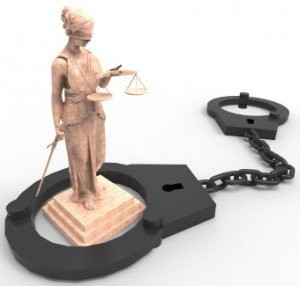 Here’s a simple axiom. Treat people like animals and they’ll act like animals. Foster a culture that encourages treating people like animals, and the people who guard them will act like animals, too.
Here’s a simple axiom. Treat people like animals and they’ll act like animals. Foster a culture that encourages treating people like animals, and the people who guard them will act like animals, too.
It’s not uncommon to hear of prison guards beating inmates for something as minor as talking back to them or insisting on medical care. It’s also not uncommon for prisoners to be emotionally unstable, uneducated, and hostile.
Put both together in a closed system, lacking the personal touches of home, or simple necessities like a good night’s sleep and a decent shower — the basics that make our home lives pleasant and humane — and you’ve got a recipe for trouble.

How Innovative Legal Teams Are Turning AI From Promise To Practice
In recent years, AI has moved beyond speculation in the legal industry. What used to be hypothetical is now very real.
I’m the first to defend the work that city prison guards do. Their lot is not easy. They’re not as well respected or compensated as their NYPD counterparts. They’re not armed, and they deal on a daily basis with huge groups of men who don’t want to be where they are.
By comparison, cops have it easier. They are the gatekeepers. Once arrested, a perp might figure if he keeps the cop on his good side, there’s a possibility (no matter how unlikely) it will work in his favor. The cop might let him go or at least influence the prosecutor in a way that benefits him. With prison guards, there’s not much to trade. Once sentenced to a time-certain in prison, the die has been cast. The inmate will be spending the next five, 10, or 20 years in prison with no autonomy and almost zero chance for getting out sooner. No wonder his attitude is bad.
Many prison guards, at least those I’ve met at Riker’s Island, often know the prisoners they guard. They come from the same neighborhoods, churches, and schools. They’d just chosen different paths. Yes, some guards are as volatile as their charges and they should be prosecuted for egregious conduct. Ten such guards are on trial now in the Bronx for beating up an inmate. But it’s the nature of their job — they’re part and parcel of a powder-keg situation — and it takes a hell of a lot of self control not to lash out.
Most people in prison suffer from some type of affliction. Whether it’s drug addiction, mental illness, low IQ, lack of family support, poverty, homelessness — the people in prison are not an easy population to take care of.

Stand With Survivors: Legal Tools To Make A Real Difference This DVAM
Enhance your legal skills to advocate for survivors of intimate partner violence.
Add to this a lack of programs, little mental-health treatment, confined spaces, terrible food, and a lot of time on their hands, and fights happen.
Riker’s Island prison, in particular, has been the butt of criticism for years. It’s dangerous, dirty, antiquated, and overcrowded. Experts recently have called for it to be torn down.
But tearing down the prison won’t change the mentality of its administrators or the population it houses. It will just change the location.
Until we decide as a society to make prisons more humane, the same problems will arise, even if we build them at Mar-a-Lago.
I laughed a couple of weeks ago when I read about how Anders Behring Breivik, who mowed down 77 people in 2011 in the biggest mass slaying in Norway’s history, is suing the government for being in solitary confinement. According to the article, he lives in a three-room suite with windows, has a DVD player and Sony PlayStation, can take online learning classes, prepares his own food, and even entered the Christmas gingerbread-house baking contest at his jail.
This, obviously, goes too far, but our system falls short. If we want prisoners and their guards to act like human beings, we’ve got to create an environment that helps that happen.
First, there needs to be more mental-health assistance for all prisoners who need it, and that’s a large percentage.
Next, there needs to be job training and school programs. It will be hard enough for people leaving prison to get jobs once they get out of jail, but without skills or education, it will be near impossible.
Finally, these guys need a way to get their ya-yas out. Half an hour a day in a caged basketball court on the roof of a building (that’s the Tombs in downtown Manhattan), doesn’t cut it if you’re in your 20s with plenty of time and energy on your hands. Some have told me they’d rather plead guilty to their crime than go to trial (even if they didn’t do it), just to be moved to an upstate prison where there’s more rec time then be stuck in the city in such extreme confinement.
I’ve spent countless hours inside a variety of city, state, and federal prisons. It’s amazing to me how anyone, confined there for years, can survive mentally.
If we really want to discourage crime and encourage the re-integration of ex-cons in society (a benefit for everyone), it’s time to give them a better means to reach that goal while they’re inside with a lot of time on their hands and very little of merit to do.
It’s not about making prisons cushier. It’s about making them work better.
Toni Messina has been practicing criminal defense law since 1990, although during law school she spent one summer as an intern in a large Boston law firm and realized quickly it wasn’t for her. Prior to attending law school, she worked as a journalist from Rome, Italy, reporting stories of international interest for CBS News and NPR. She keeps sane by balancing her law practice with a family of three children, playing in a BossaNova band, and dancing flamenco. She can be reached at [email protected] or tonimessinalaw.com.